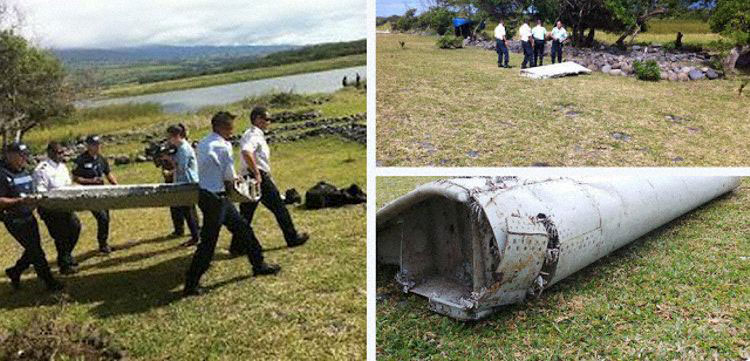Malaysia Airlines Boeing 777-2H6ER plane crash
Indian Ocean, off Perth, Australia

Updated on
 The Boeing 777-200 operated by Malaysia Airlines took off from Kuala Lumpur, Malaysia, for a passenger flight to Beijing, China. 226 passengers and 12 crew was onboard. The plane disappeared from radar screen during its cruise over the Gulf of Thailand.
The Boeing 777-200 operated by Malaysia Airlines took off from Kuala Lumpur, Malaysia, for a passenger flight to Beijing, China. 226 passengers and 12 crew was onboard. The plane disappeared from radar screen during its cruise over the Gulf of Thailand.
Radar and radio contact with the aircraft had been lost while the plane was enroute at FL350 (around 10 000 meters) about 90 NM (160 km) northeast of Kota Bharu, Malaysia over the Gulf of Thailand. There has been no distress call.
The aircraft wreckage has still not yet been located. Investigations indicated the aircraft have ended in the Indian Ocean, thousand of kilometres west of the Australian coast.
Some debris have drifted and made landfall on the African coastline. They have been recovered in the years following the accident, thus confirming the aircraft has been destroyed.
One flaperon and outboard flap belonging to the missing B777 has been recovered. Analysis shows that the only flaps position consistent with the damages received by the recovered flaperon and recovered outboard flap was the retracted position.
On Dec 20th 2016 the ATSB (Australian Transport Safety Bureau) released a report that documents the proceedings and outcomes of the First Principles Review meeting on the search for missing Malaysia Airlines flight MH370 held in Canberra from 2 to 4 November 2016. Participants consisted of experts in data processing, satellite communications, accident investigation, aircraft performance, flight operations, sonar data, acoustic data and oceanography. The purpose of the meeting was to reassess and validate existing evidence and to identify any new analysis that may assist in identifying the location of the missing aircraft. The report conclusions are:
- 1. There is a very high level of confidence in the search results to date in the current indicative search area. The high resolution sonar coverage is very high and the data has been subjected to a very thorough analysis. The area has been searched to a level of confidence >95% without identifying the aircraft debris field.
- 2. The analysis of the last two SATCOM transmissions, the likely position of the aircraft’s flaps at impact and results from recent end of flight simulations has allowed a revision of the distance required to be searched away from the 7th arc. 99% of the DST (Defence Science and Technology) Group analysis results lie within 25 NM to the east and west of the arc.
- 3. A residual probability map based on the comprehensive satellite communication data analysis and updated with the latest search results and the CSIRO drift analysis identified a remaining area of high probability between latitudes 32.5°S and 36°S along the 7th arc.
- 4. The participants of the First Principles Review were in agreement on the need to search an additional area representing approximately 25,000 km² […]. Based on the analysis to date, completion of this area would exhaust all prospective areas for the presence of MH370.
This accident is the 5th worst plane crash since year 2000 in terms of the number of combined onboard and ground fatalities. Watch here the list of the worst aircraft crashes since year 2000.



